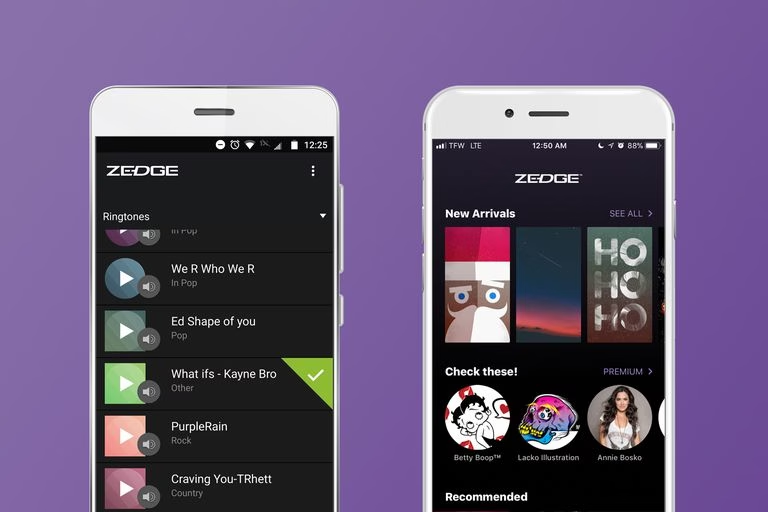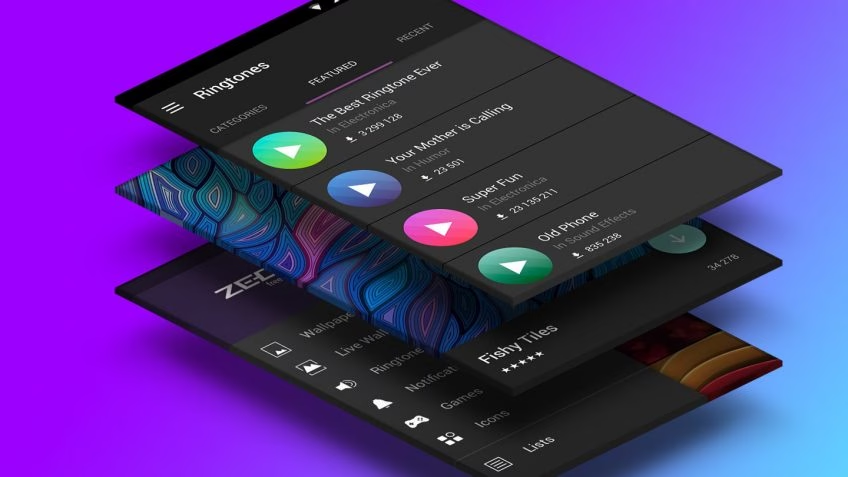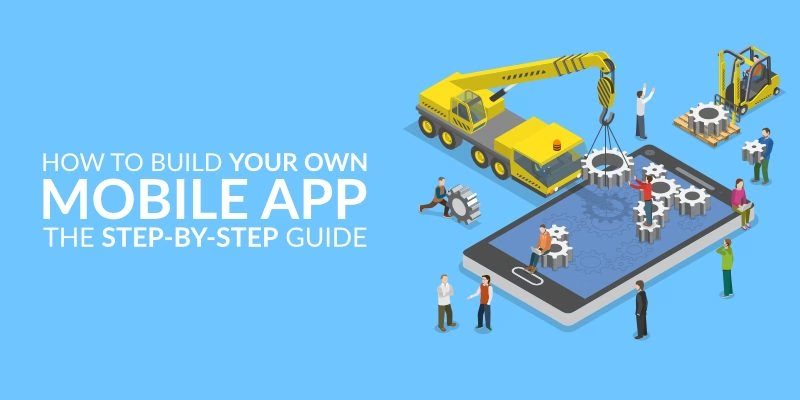
How to Build an Android Device Personalization Services App
Want to know how to build an Android device personalization services app?
Personalization apps help mobile users to configure their home screens according to their tastes. The home screen is important for mobile users since they use it frequently to launch apps, search the Internet, etc.
Apps in earlier days offered the same user experience to all mobile users. However, with the growing competition in the mobile app landscape, user experience is now very important.
Different users want to experience their mobile devices differently, and they typically want to customize their home screen.
This is a lucrative segment that is definitely worth exploring.
Let's see how you invest in the market by building an innovative device personalization services app successfully. First, we will look at an example device personalization app to understand what our target audience expects from such mobile applications.

Get a complimentary discovery call and a free ballpark estimate for your project
Trusted by 100x of startups and companies like
Zedge: An Example of a Personalization App

Zedge is a popular personalization app and its website claims that the app has over 260 million downloads. The company also claims to have 35 million active users.
The app offers the following advantages and features:
- You can use it on Android as well as iOS devices.
- Zedge offers both free and premium content.
- It allows users to personalize wallpapers, stickers, and ringtones. Users can also add videos and music, and Zedge has content from some of the top musicians.
The Zedge app offers in-app purchases.
Note: There are also other Android device personalized apps, and you can find more examples in “9 essential apps to personalize your Android home screen”.
Building an Android Device Personalization Services App
How do you build an Android device personalization services app like Zedge? I will now explain the required steps for this, which are as follows:
1. Scope definition of device personalization services app project
To start with, induct a project manager (PM), an IT architect, and business analysts into your team. This team should work with the business stakeholders, which will enable you to define the project scope.
I recommend that you offer an Android app that should allow users to personalize wallpapers and stickers, moreover, users can add video and music to their home screen. You should plan to launch the app with English language support.
2. Choose the right project methodology
The above-mentioned scope will help you to launch the app quickly in the market, and this can be your “Minimum Viable Product” (MVP). You will subsequently enhance the app with more features based on market feedback.
E.g., you can add a ringtone personalization feature, alternatively, you could add support for other languages. You should consider using the Agile methodology for projects involving this kind of iterative development.
Read “Waterfall vs Agile: which methodology is right for your project” to learn more about Agile.

3. Consider device personalization services app internationalization guidelines
While you are launching the MVP with English language support, you could add other language support in the future. This requires that you follow app internationalization best practices during the design and development of your app.
There are several such best practices, e.g., you should keep your code separate from your content. You can read more about this in “The ultimate guide to mobile app internationalization”.
4. Formulate a development approach
I recommend that you use the following development approach in this project:
- Use a Mobile-Backend-as-a-Service (MBaaS) platform for developing the Android app, which eliminates the need for you to develop and manage the mobile backend.
- While you will need to code the personalization feature, you can use application programming interfaces (APIs) to get content like wallpapers, stickers, music, etc. This will expedite the project.
- Use a test automation aid to enhance test coverage.
This approach will improve the chances of your success, as I had explained in “What is the best development approach to guarantee the success of your app?”.
5. Build your project team
You now need to staff the other roles in your team, which are as follows:
- UI designers;
- Android developers with Java skills;
- Testers;
- DevOps engineers.
Are you considering hiring freelancers? Note that a project to build an Android device personalization app requires a good deal of coding and testing, and this makes it a complex project.
You should hire a field expert development team for such projects, as I have explained in “Freelance app development team vs. field expert software development teams”.
6. Use the “Scrum” technique to manage the project
“Scrum” is a proven technique to manage Agile projects and I recommend that you use it. You should form “Scrum teams”, i.e., small, cross-functional teams where developers and testers work together.
Hire expert developers for your next project
1,200 top developers
us since 2016
The PM performs the role of a “Scrum master”, and the team works on iterations. In the Scrum parlance, these iterations are called “Sprints”. You can read more about Scrum in “How to build a Scrum development team?”.
7. Sign-up for a robust MBaaS platform
MBaaS platforms can expedite mobile app development projects, as I have earlier explained in “How to choose the best Mobile Backend as a Service (MBaaS)?”. Such platforms offer several advantages, e.g.:
- MBaaS providers manage cloud infrastructure, persistent storage, etc. This enables you to focus on designing and developing the front-end and business logic since you don‘t need to develop and manage the mobile backend.
- You can easily scale your mobile app when you use an MBaaS platform.
- MBaaS platforms enable you to integrate 3rd-party APIs easily.
- You will find it easier to implement features like push notifications, user management, and application security when you use an MBaaS platform.
I recommend that you use AWS Amplify, i.e., the MBaaS offering from AWS. It‘s a good choice since AWS has excellent cloud capabilities.
8. Find an effective project management tool
A scrum team works as follows:
- A “Product Owner” provides the business requirements in a document named the “Product Backlog”.
- The team estimates the requirements and discusses the priorities with the business stakeholders.
- Based on these, the team schedules the requirements in sprints, and this process is called “sprint planning”.
- The team discusses the project status in “Daily stand-up meetings” during the sprint.
- Upon completing the work of a sprint, the team demonstrates the app to the business stakeholders. The business stakeholders approve the sprint in a “Sprint review meeting”.
- The team conducts a lessons-learned exercise after the sprint, and it‘s called the “Sprint retrospective meeting”.
I recommend that you use Asana, a popular PM tool to manage these activities effectively.
9. Get an API solution for wallpapers
You need an API solution to provide a collection of beautiful wallpapers to your app users. I recommend that you use “The Wallpaper Abyss API” for this, which is created by a team named the “Alpha Coders”.
There‘s a free tier for using this API, and you need to contact the Alpha Coders team for the pricing details beyond this limit. It‘s an easy-to-use API, and its website provides detailed instructions for using it.
10. Sign-up for an API solution to get stickers
An API solution to offer interesting stickers to your users will be important since they can use them to personalize their home screen. Stipop Sticker API is a good choice since you can get high-quality stickers here.
Their website claims that hundreds of businesses use Stipop Sticker API on their apps to power 150K+ stickers and enhance user experience. It counts Google, Microsoft Teams, and Canva among its clients.
11. Find an API solution to access a music library
Your app users will need to find the music of their choice, therefore, you should use an API solution to facilitate that. I recommend that you use the SoundCloud API, and you can access it in “SoundCloud for developers”.
SoundCloud provides detailed documentation that guides you to use the embedded player in your app. You can learn how to use this API by reading the “HTTP API guide”.
12. Get an API solution to access a video library
You need to enable your users to choose videos as part of personalizing their home screen. An API solution for finding videos will help with this, therefore, I recommend that you use the YouTube API.
With the help of this API solution, you can let your app users find and watch YouTube videos of their choice. As with any Google solution, YouTube offers excellent documentation for its API. You can find it in “YouTube Android Player API”.
13. Procure an API solution to implement the in-app purchase feature
Like Zedge, your app needs the in-app purchase feature. Using an API solution will help you to incorporate this feature, therefore, I recommend that you use Shopify.
You can access the Shopify API on the Shopify developer portal, moreover, you can find the API documentation in “API guides”. Shopify provides API tutorials, and these contain useful learning resources too.
14. Sign-up for a payment gateway API solution
Whether to buy premium content or to make other in-app purchases, your app users need online payment facilities. You should sign-up for a payment gateway API solution to incorporate this feature, and I recommend Braintree, which is from PayPal.
“Braintree Direct” is the right solution for you, and you can access the following documentation to use it:
15. Find a bulk-SMS API solution
You need to implement the push notifications feature in the mobile app to boost user engagement, and a bulk SMS solution helps here. I recommend that you sign-up with Twilio.
Hire expert developers for your next project
Its “Programmable SMS” is the right solution for your requirements. You can read “Messaging services and Copilot” to learn how to use this solution, and you can visit the Twilio pricing page to view its pricing plans.
16. Get a test automation aid to improve your test coverage
The proposed Android app should work with all Android devices, however, you need to test the app against a wide range of devices to ensure this. Popular open-source test automation frameworks aren‘t enough for this.
I recommend that you sign-up with pCloudy. The company offers thousands of device/browser combinations on the cloud, and you can test your app against a large number of devices.
17. UI design for device personalization services app
Your proposed Android app needs a user-friendly UI, therefore, you should consult appropriate guides. Read “Mobile navigation menu examples” to understand which mobile navigation menu pattern you should choose.
The UI design team should choose an appropriate color scheme for the UI. Our guide “8 trends in mobile app color scheme” can help you to find the right scheme.
Icons help app users to access the key features of a mobile app easily, therefore, you should use the established best practices for designing icons. Read our guide “How to design the perfect icon for your mobile app?” for more insights.
The UI design for an Android app should follow the “Material Design” guidelines. Your team should consult this, and you can find it on the Material Design website.
18. Code, test, and publish the Android device personalization services app
Developing the proposed Android app involves the following:
- Code the app using Java since most Android developers know it well.
- Use Android Studio, the popular IDE for Android development.
- Integrate the SDKs/APIs for Twilio, Shopify, Braintree Direct, YouTube, Wallpaper Abyss, and Sitpop Stickers.
- Use Espresso and the pCloudy mobile device lab to test the app.
- Publish the app to Google Play Store by following the instructions in “Publish your app”.
You have just developed the MVP for your Android device personalization app. Congratulations!
Planning to Launch Your Android Device Personalization Services App?
By allowing users to customize their home screen, personalization apps contribute to a better user experience.
This guide along with platforms, tools, and APIs/SDKs can expedite the development, however, creating an Android phone personalization app involves quite a bit of programming. You would do well by engaging a reputed software development company for such projects.
It takes time and considerable due diligence to find such a development partner. Read our guide “How to find the best software development company?”, which will help you with the due diligence.
If you, as a business owner or CTO, are still looking for experienced mobile phone app developers to partner with for device personalization app development, contact DevTeam.Space by sending your project specifications via this quick form.
DevTeam.Space has a field-expert software developers community experienced in developing market-competitive software solutions. One of our account managers will get back to you to discuss how we can help with your software app development project.
Frequently Asked Questions for Device Personalization Services App
It is an Android system component that provides smart predictions. It allows each device to be personalized to the smart actions of its user like setting a shortcut to launch google maps or other Google apps, dialing frequent contact numbers, etc. Android system intelligence help users effectively personalize their Android or Google phones, at least Google pixel phones, through the settings app. E.g. enabling a keyboard suggestion strip for writing a smart reply or live caption with smart text suggestions, etc.
Powered by Google Chrome, Android WebView is a system component that allows Android apps to display web content.
This is Google’s Android policy that is designed to protect its user’s data and allow them to understand what Google will do with their data, including its permitted use by third-party companies.


